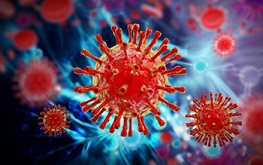BREAKING! Chinese Researchers Warn That New SARS-CoV-2 Recombinant Variant XBB Is The Most Immune Evasive Strain That Is Comparable To The SARS-CoV-1 Strain!
Source: Medical News - SARS-CoV-2 XBB Sub-lineage Oct 05, 2022 2 years, 6 months, 1 week, 1 day, 6 hours, 41 minutes ago
Researchers from Peking University, Beijing in a new study have found that the new SARS-CoV-2 recombinant variant XBB is the most immune evasive strain to date that is almost comparable to the lethal SARS-CoV-1 strain that made its short debut in 2003.

The
XBB sub-lineage is a recombinant variant of two highly transmissible and immune evasive sub-lineages BM.1.1.1(BA.2.75.3.1.1.1) and BJ.1 (BA.2.10.1.1.) with the spike mutations H146Q, G183E and the E mutation T11A as the defining mutations.
https://cov-spectrum.org/explore/World/AllSamples/Past6M/variants?nextcladePangoLineage=XBB*
Even as we write this article, the Omicron variants, sub-lineages and recombinant variants are all still rapidly evolving and spewing newer mutations as a phase never witnessed in the history of virology. In the last few hours, the sequence databases were updated reflecting yet another XBB sub-lineage has debuted in the last 15 days spotting the spike mutation: G252V with already 85 sequences detected in Singapore, Bangladesh, Denmark, UK, Australia and Austria.
https://github.com/cov-lineages/pango-designation/issues/1088 (This new sub-lineage was not covered in the study)
The study team said that continuous evolution of Omicron has led to numerous subvariants that exhibit growth advantage over BA.5. Such rapid and simultaneous emergence of variants with enormous advantages is unprecedented.
Despite their rapidly divergent evolutionary courses, mutations on their receptor-binding domain (RBD) converge on several hotspots, including R346, K356, K444, L452, N460K and F486.
The driving force and destination of such convergent evolution and its impact on humoral immunity established by vaccination and infection remain unclear.
The study team demonstrate that these convergent mutations can cause striking evasion of convalescent plasma, including those from BA.5 breakthrough infection, and existing antibody drugs, including Evusheld and Bebtelovimab.
The newly emerged sub-lineages BR.2, CA.1, BQ.1.1, and especially XBB, are the most antibody-evasive strain tested, far exceeding BA.5 and approaching SARS-CoV-1 level.
In order to delineate the origin of the convergent evolution, the study team determined the escape mutation profiles and neutralization activity of monoclonal antibodies (mAbs) isolated from BA.2 and BA.5 breakthrough-infection convalescents.
Importantly, due to humoral immune imprinting, BA.2 and especially BA.5 breakthrough infection caused significant reductions in the epitope diversity of neutralizing antibodies and increased proportion of non-neutralizing mAbs, which in turn concentrated humoral immune pressure and promoted the convergent RBD evolution.
Lead researcher, Dr Yunlong Cao from the Biomedical Pioneering Innovation Center (BIOPIC), Peking University; Changping Laboratory told Thailand
"https://www.thailandmedical.news/">Medical News, “Additionally, the precise convergent RBD mutations and evolution trends of BA.2.75/BA.5 subvariants could be inferred by integrating the neutralization-weighted DMS profiles of mAbs from various immune histories (3051 mAbs in total). Moreover, we demonstrated that as few as five additional convergent mutations based on BA.5 or BA.2.75 could completely evade most plasma samples, including those from BA.5 breakthrough infection, while retaining sufficient hACE2-binding affinity.”
The study findings importantly suggest that current herd immunity and BA.5 vaccine boosters may not provide sufficiently broad protection against infection.
The study findings were published on a preprint server and are currently being peer reviewed.
https://www.biorxiv.org/content/10.1101/2022.09.15.507787v3
The study findings validate whatever we at Thailand Medical News has been writing about in the last two weeks warning about the coming Late Fall and Winter 2022 surges.
https://www.thailandmedical.news/news/warning-next-covid-19-surges-will-be-lead-not-by-a-one-or-a-couple-of-new-variants-but-by-a-multitude-of-sub-lineages-with-convergent-rbd-escape-mutat
https://www.thailandmedical.news/news/with-the-debut-of-over-200-new-immune-evasive-omicron-variants-and-sub-lineages-expect-a-winter-of-dangerous-reinfections-and-coinfections
https://www.thailandmedical.news/news/spike-346-mutations-emerging-in-many-new-omicron-variants-and-sub-lineages-is-helping-sars-cov-2-to-escape-neutralization-by-all-known-antibodies
https://www.thailandmedical.news/news/sars-cov-2-presents-its-fall-and-winter-2022-variant-collections-featuring-ba2-75-2,-bq-1-1,-bw-1,-xbb,-bu-1,-br-2,-bm-1-1-1,-ca-1,-bj-1-and-bn-1
The study team demonstrated that convergent RBD evolution can cause severe immune evasion and could be rationalized by integrating DMS profiles. Given the existence of immune imprinting, the humoral immune repertoire is not effectively diversified by infection with new Omicron variants, while the immune pressure on the RBD becomes increasingly concentrated and promotes convergent evolution.
The study team warned that the interaction between convergent evolution of escaping variants and less diversified antibody repertoire would ultimately lead to a highly evasive variant, posing a great challenge to current vaccines and antibody drugs.
Importantly, the antibody evasion capability of CA.1, BQ.1.1, XBB, and the constructed convergent mutants have already reached or even exceeded SARS-CoV-1, indicating extensive antigenicity drift.
The study team by constructing an antigenic map of the tested SARS340 CoV-2/SARS-CoV-1 variants utilizing the plasma NT50 data, found that the antigenicity distances of SARS-CoV-2 ancestral strain to CA.1, XBB and BQ.1.1 are already comparable to that of SARS-CoV-1.
Considering that there are ~50 different amino acids between SARS-CoV-1 and SARS-CoV-2 RBD, but only 21 mutations on BQ.1.1 RBD compared to the ancestral strain, these results indicate that the global pandemic indeed has greatly promoted the efficiency of the virus to evolve immune escape mutations.
Furthermore, since these convergent variants could escape the binding of the majority of NAbs, it is possible that infections by those mutants may hardly revoke pre-existing memory B cells that encode NAbs, but only recall those memory B cells that encode non-neutralizing antibodies.
Alarmingly, this may cause inabilities to induce rapid increase of plasma neutralization after infection and may correlate with escalated percentages of severe symptoms.
The study team warns that the potential disease severity caused by new convergent variants needs to be closely monitored.
The study team’s prediction demonstrated a remarkable consistency with real-world observations. Some variants close to the predicted and constructed variants have already emerged while the study team performed the experiments, validating their prediction model. For example, BQ.1.1, BA.5+R346T+K444T+N460K, is highly similar to BA.5-S3, BA.5+R346T+N417T+K444N+N460K, given that K444N/T and K417N/T exhibit similar evasion capabilities.
The study team stressed that if this prediction model was available at the beginning of the pandemic, the development of NAb drugs and vaccines may not be so frustrated against the continuously emerging SARS-CoV-2 variants.
The study team said that broad-spectrum SARS-CoV-2 vaccines and NAb drugs development should be of high priority, and the constructed convergent mutants could serve to examine their effectiveness in advance.
For more on the SARS-CoV-2
XBB Sub-lineage, keep on logging to Thailand
Medical News.
